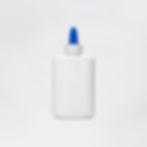Owl Eyes Science Activity
Our owl-themed preschool forest animal science activity is perfect for young learners who are curious about these majestic creatures. Get ready to discover the many features that make owl eyes unique and their importance in the animal kingdom.
Materials Needed




Owl Eyes Science
Difficulty Level: Medium
Time Needed: 15 Minutes
Best done: Indoors
Mess Level: Low

Materials Needed
-
Owl Image
-
Child Safe Scissors
-
Non Toxic Glue
-
2 Toilet Paper Rolls
-
Optional: Flashlight
Time to Experiment!
-
Start the activity by looking at some pictures of owls (or even just the owl in the book). Ask your child(ren) what they notice about the owl’s eyes.
-
Perhaps they notice:
-
They are really big
-
They are round
-
They are on the front of the owl’s face and face forward (like ours)!
-
Ask them if they have any ideas about why and owl’s eyes are like this!
-
-
Explanations (you can do before or after science project)
-
An owl’s eyes are SO big to help them take in more light so they can see in the dark better!
-
Because and owl’s eyes are on the front of its face, instead of the side like some animals, an owl has to turn its head to see things that aren’t in its’ line of vision, just like us!
-
An owl’s eyes aren’t balls like ours-where we can move them all around, they are more like tubes (aka the science project following this). So, an owl can turn its head ALMOST all the way around so that it can see things.
-
*To do the activity-simply cut out the owl eyes template, also cutting out the eyes portion of the owl and glue (or tape) the tubes (toilet paper or paper towel rolls) on!
-
*Have your child put their eyes into them to “see like an owl.”
-
*Ask them what they notice
-
-Has their field of vision gone down?
-
-Do they have to turn more to see?
-
-Optionally you can turn the lights off and give them a dim flashlight to show (somewhat) that an owl can see in the dark- a lot better than we can!
